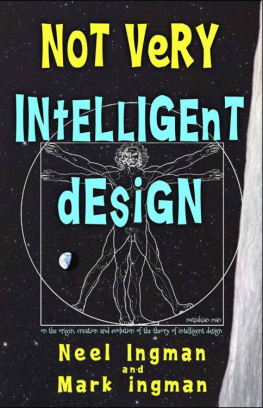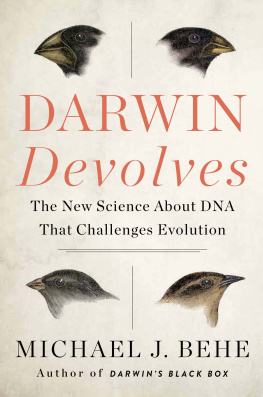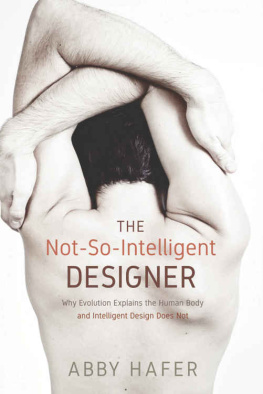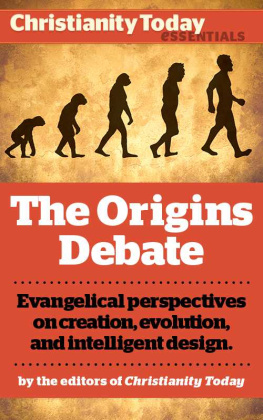By Design:
Evidence for Natures Intelligent DesignerThe God of the Bible
BY JONATHAN SARFATI, PH.D., F.M.

Published and distributed by
Creation Book Publishers
www.creationbookpublishers.com
Copyright 2008 Creation Ministries International (Australia)
ABN 31 010 120 304. All rights reserved. No part of this book may be reproduced in any manner whatsoever without written permission of the publisher, except in the case of brief quotations in articles and reviews.
ISBN: 978 0 94990672 4
COVER DESIGN: by Amanda Greensladea composition of:
front: Arctic tern photo by Robert LaFollette www.robertlafollette.com ; cosmology illustration by European Space Agency and Wolfram Freudling (Space TelescopeEuropean Coordinating Facility/European Southern Observatory, Germany); chromosome illustration from crestock.com; moon illustration from stockxpert.com, and back: Gecko photo by Grego Pogschnik sxc.hu.
LAYOUT: by Vanessa Fitzgerald.
PRINTED: August 2008
For information on this book or on creation/evolution issues, contact:


A BOUT THE A UTHOR

Jonathan D. Sarfati, Ph.D, F.M., was born in Ararat, Australia, in 1964. He moved to New Zealand as a child, where he later studied mathematics, geology, physics, and chemistry at Victoria University in Wellington. He obtained honours level in physical and inorganic chemistry, as well as in condensed matter physics and nuclear physics.
Dr Sarfati received his Ph.D. in physical chemistry from the same institution in 1995 on the topic of spectroscopy, especially vibrational. He has co-authored various technical papers on such things as high temperature superconductors and sulfur- and selenium-containing ring and cage molecules.
As well as being very interested in formal logic and philosophy, Dr Sarfati is a keen chess player. He represented New Zealand in three Chess Olympiads and is a former New Zealand national chess champion. In 1988, F.I.D.E., the International Chess Federation, awarded him the title of F.I.D.E. Master (F.M.). He is well-known at major creation conferences for successfully playing, while blindfolded, up to 12 sighted challengers simultaneously.
A Christian since 1984, he was for some years on the editorial committee of Apologia , the journal of the Wellington Christian Apologetics Society, of which he was a co-founder.
Dr Sarfati has since 1996 worked full-time for Creation Ministries International (CMI) , a non-profit ministry grouping, as a research scientist, speaker and editorial consultant for Creation magazine and the associated Journal of Creation , and has written many articles for both. For most of this time, he was based in the CMI office in Brisbane, Australia, until transferring to the CMI-US office in Atlanta, Georgia, in early 2010 with his American-born wife, Sherry.
Jonathan has authored the books Refuting Evolution (the biggest selling creation book of all time) , Refuting Evolution 2, Refuting Compromise (a comprehensive theological and scientific defense of straightforward Genesis) and The Greatest Hoax on Earth? Refuting Dawkins on Evolution. In addition, he has co-authored several other books, including the popular Creation Answers Book.
He also contributes specialist information to CMIs multi-country website creation.com.
F OREWORD
Don Batten, Ph.D: scientist, speaker and writer for Creation Ministries International, Australia.
My colleague, Dr Jonathan Sarfati, is renowned as a leading thinker, writer, scientist and logiciana champion for the truth of Genesis as history. And virtually all exegetes would agree that Genesis is history, were it not for the sad fact that many have been bluffed and intimated into accepting the scientific revisionist version of history.
Jonathans books, Refuting Evolution (1 and 2), and Refuting Compromise , are some of the worlds best-selling and highly regarded creation books. I think that this powerful new book is a definitive one on intelligent design.
Sarfatis passion for describing the incredible designs in the natural world shines through. While never disparaging the ID movement, he forthrightly presents and builds on the design argument. He also sets the record straight about how creationists of the past have pioneered design arguments (including irreducible complexity, albeit with different terminology)but he does this without detracting from the contributions of our natural allies within ID.
Not surprisingly, given his doctorate in physical chemistry, the author devotes a chapter to decisively exposing chemicals-to-life evolution as a product of wishful thinking. This is a treatise in itself.
Sarfati deals head-on with the objections that Genesis-avoiding ID folk tend to sidestep, or handle badly. For example, the issue of so-called poor design, and also why there are bad things in nature. And of course, he dispatches with aplomb the old canard, revived in modern form by God-hater Richard Dawkins, namely, Who designed the Designer?
Many, both laypeople and scientists, owe their confidence in Gods Word (and humanly speaking, even their faith in Christ) to design arguments for biblical creation, and doubtless many more will as a result of this potent book.
Enjoy the feast!
Dr Don Batten
CONTENTS
Chapter 1. |
Chapter 2. |
Chapter 3. |
Chapter 4. |
Chapter 5. |
Chapter 6. |
Chapter 7. |
Chapter 8. |
Chapter 9. |
Chapter 10. |
Chapter 11. |
Chapter 12. |
Chapter 13. |
Chapter 14. |
Chapter 15. |
Chapter 16 |
INTRODUCTION
A BRIEF HISTORY OF DESIGN
The Design Argument has a long and distinguished history. Philosophers have used the design of life and the universe to point to a Designer for millennia. Since life originated in the past, neither its design nor alleged evolution can be observed directly by experimental science. But evolution or creation might conceivably have left some effects that can be observed. This chapter discusses the criteria that are used in everyday life to determine whether something has been designed, and applies them to the living world.
ARGUMENT FROM DESIGN TO DESIGNER
Many philosophers have argued that the living world shows evidence of design, which points to one or more designers. This is often called the teleological argument .
Plato and Aristotle

Plato
Plato (c. 428c. 348 BC ) said that two things lead men to believe in the gods, one based on the soul, and the other from the order of the motion of the stars, and of all things under the dominion of the mind which ordered the universe.
His greatest student, Aristotle (384322 BC ), argued from the order in the stars that there must have been a First Unmoved Mover which is God, a living, intelligent, incorporeal, eternal and most good being who is the source of order in the cosmos.1
Next page














